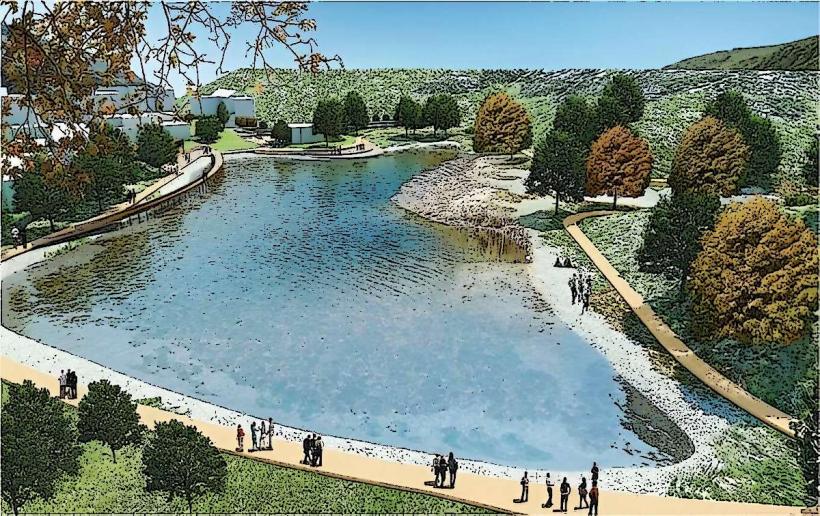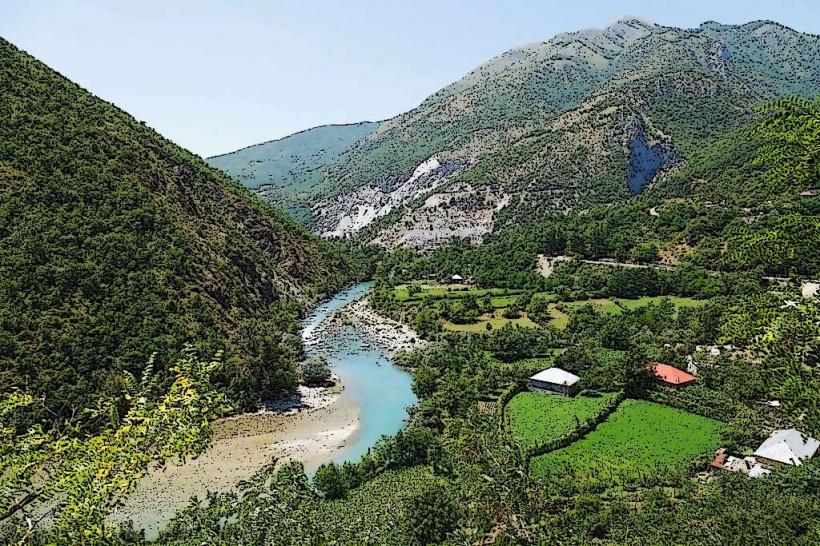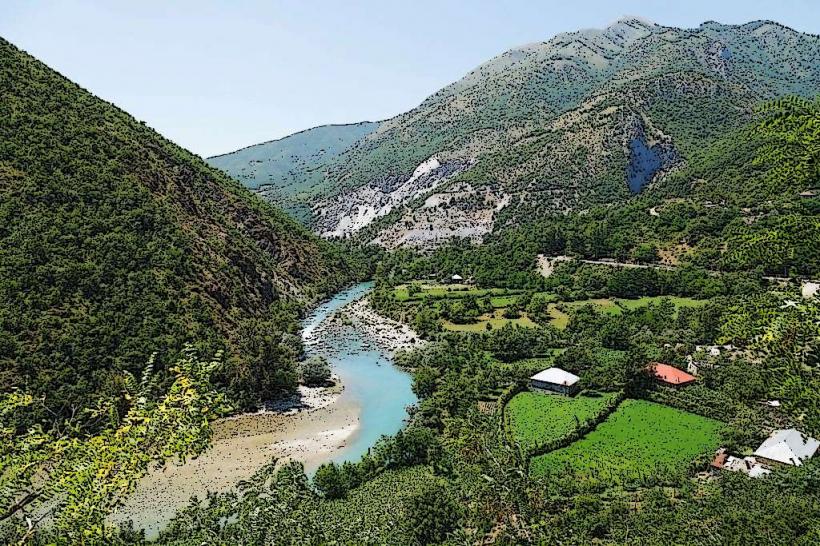Information
Landmark: Dukagjin HighlandsCity: Puka
Country: Albania
Continent: Europe
The Dukagjin Highlands (Albanian: Bjeshkët e Dukagjinit) are a beautiful and rugged region located in the northwestern part of Albania, particularly within the Shkodra and Përmet districts. These highlands are part of the larger Albanian Alps (or Accursed Mountains, Bjeshkët e Nemuna) and are renowned for their natural beauty, unique landscapes, and cultural heritage.
Geography and Landscape
Location: The Dukagjin Highlands are situated in the northernmost part of Albania, bordering Montenegro to the northwest. They are positioned between the Albanian Alps and the Morava Mountains, with the Shkodra region to the north and Përmet to the south.
Mountain Ranges: The region is characterized by rugged mountains, with steep cliffs, deep valleys, and high-altitude plateaus. The Dukagjin Plains, a fertile area located in the lower regions, are surrounded by these mountainous areas. The highlands offer stunning views and diverse terrain, making it a popular destination for nature lovers and hikers.
Rivers and Lakes: The Rivers of the Dukagjin Region, such as the Drin and Morava, flow through the highlands and contribute to the area’s rich biodiversity. Several small glacial lakes and springs also dot the landscape, adding to the natural allure of the region.
Cultural and Historical Significance
Ethnographic Importance: The Dukagjin Highlands are home to several traditional Albanian villages and ethnic groups, including the Gheg Albanians. The people here maintain ancient customs, language, and ways of life, including pastoral traditions, handicrafts, and traditional Albanian architecture.
Ottoman Influence: Like much of northern Albania, the Dukagjin Highlands were significantly influenced by the Ottoman Empire, which ruled the region for several centuries. The presence of Ottoman-era structures such as mosques and bridges can still be seen in the area. The culture and traditions of the highlands have often been shaped by these historical influences.
Cultural Heritage: The Dukagjin Highlands are rich in oral traditions and folklore, with songs, dances, and stories passed down through generations. The region is known for its distinctive music, often featuring the iso-polyphonic singing style, which is a UNESCO-recognized element of Albania’s intangible cultural heritage.
Natural Beauty and Tourism
Hiking and Trekking: The rugged terrain and scenic beauty of the Dukagjin Highlands make it an ideal destination for hiking, trekking, and mountaineering. The highlands are part of the larger network of trails that lead through Albania’s mountain regions, such as the Valbona to Theth trek, which connects the Dukagjin area with other stunning locations in the Albanian Alps.
Biodiversity: The Dukagjin Highlands are home to a rich array of wildlife, including species like brown bears, wild boars, wolves, deer, and a variety of bird species, including golden eagles. The diverse flora and fauna make it an excellent spot for wildlife watching.
Traditional Villages: The region is dotted with small villages that have preserved their traditional way of life, such as Gajtan, Zall, and Rreth. Visitors can explore the villages to experience traditional Albanian hospitality, enjoy local cuisine, and learn about the rural lifestyle that has remained largely unchanged for centuries.
Bjeshkët e Dukagjinit National Park: This protected area covers parts of the Dukagjin Highlands and offers visitors the chance to explore the region's stunning natural landscapes, including dense forests, alpine meadows, and glacial lakes. The park is home to several species of flora and fauna, many of which are rare and endemic to the region.
Activities and Attractions
Cultural Events and Festivals: The Dukagjin Highlands host various local festivals and cultural events, especially in the summer months. These celebrations often include traditional music, dance, and local food. The Valbona Festival and the Shkodra Cultural Festival are examples of events that celebrate the culture of the highlands.
Traditional Cuisine: Visitors can sample traditional Albanian food in the highlands, which includes dishes such as tavë kosi (lamb with yogurt), qofte (meatballs), byrek (pastry with fillings), and various dairy products like kishk (fermented milk) and feta-style cheeses. These dishes are often prepared using locally sourced ingredients.
Historical Sites: The Dukagjin Highlands are also home to several historical sites, including fortresses, churches, and mosques. Some of these sites date back to the Ottoman and Roman periods, offering insight into the rich history of the region.
Conclusion
The Dukagjin Highlands are a treasure trove of natural beauty, cultural heritage, and historical significance. From its rugged mountains and pristine rivers to its rich traditions and warm-hearted people, the region offers a unique experience for travelers seeking to explore one of Albania’s most untouched and picturesque landscapes. Whether you're a nature enthusiast, a history buff, or a cultural traveler, the Dukagjin Highlands are an unforgettable destination.




